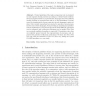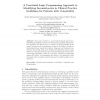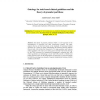18 search results - page 1 / 4 » Applying Artificial Intelligence to Clinical Guidelines: The... |
AIIA
2003
Springer
13 years 8 months ago
2003
Springer
In this paper, we present GLARE, a domain-independent system for acquiring, representing and executing clinical guidelines. GLARE is characterized by the adoption of Artificial Int...
AIME
2009
Springer
13 years 8 months ago
2009
Springer
Abstract. Clinical guidelines (GLs) play an important role to standardize and organize clinical processes according to evidence-based medicine. Several computer-based GL representa...
AIME
2011
Springer
12 years 4 months ago
2011
Springer
This paper describes a novel methodological approach to identifying inconsistencies when concurrently using multiple clinical practice guidelines. We discuss how to construct a for...
AIME
2003
Springer
13 years 9 months ago
2003
Springer
The theory of granular partitions (TGP) is a new approach to the understanding of ontologies and other classificatory systems. The paper explores the use of this new theory in the ...
AIME
1997
Springer
13 years 8 months ago
1997
Springer
: Clinical guidelines reuse existing clinical procedural knowledge while leaving room for flexibility by the care provider applying that knowledge. Guidelines can be viewed as gene...



